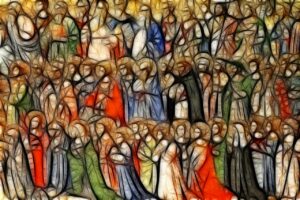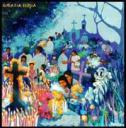 Activities that require a certain amount of skill to complete successfully typically also require much practice before they are successfully mastered. I’m thinking of things like learning to catch a baseball, or ride a bicycle or a horse, or skate across a frozen pond in the winter. Sometimes the attempt is successful and all are happy and excited. Sometimes the attempt is not. Then several outcomes are possible. One is that the person trying to learn a new skill simply gives up and doesn’t try again. There are times when that might be a good option, especially if the activity in question is very dangerous and could end with a serious injury or death. But most skills or activities don’t fall into that category.
Activities that require a certain amount of skill to complete successfully typically also require much practice before they are successfully mastered. I’m thinking of things like learning to catch a baseball, or ride a bicycle or a horse, or skate across a frozen pond in the winter. Sometimes the attempt is successful and all are happy and excited. Sometimes the attempt is not. Then several outcomes are possible. One is that the person trying to learn a new skill simply gives up and doesn’t try again. There are times when that might be a good option, especially if the activity in question is very dangerous and could end with a serious injury or death. But most skills or activities don’t fall into that category.
Another possible outcome is for the individual to get back up right away and try again. One expression in such cases is to “get back on the horse.” We like to see this determination when the skill is one that will help the individual or community in the future. It’s how most of what we learn as we grow up happens.
But then there is the in-between situation. The skill is hard or is an activity that doesn’t come naturally to the individual. Others are watching and may laugh at one’s failure. The individual has seriously tried to master the skill (arithmetic anyone?), but it doesn’t come easily. It’s a skill one can go through life without ever mastering. So many reasons not to keep trying.
This is where “One more time with feeling” comes into the picture. If those around us, or those teaching us, or simply those who care about us can encourage another attempt, or as many as it takes, we are more likely to succeed eventually.
I suspect God looks at us often, and with a resigned shake of the head, thinks, “Well, one more time with feeling …” and sends someone once again to remind us all of what our calling is. How many times do we need to be reminded to care for the poor, the little ones, those who have to leave their homes to find safety or a way to support their children? How many times will a messenger need to be sent to remind the leaders of the community of the importance of working for the common good rather than personal power and wealth?
In the time of Jeremiah, before the conquest of Jerusalem and exile of the community in Babylon, the authorities were angry that he, Jeremiah, refused to remain silent as they looked to their own interests rather than those of the community and their common relationship with the Lord. They were so angry that they convinced the King to let them get rid of this troublemaker. He was thrown into a cistern, a place like a well where water was stored in time of rain and used in drier times. Fortunately, there was only mud in the bottom, but that was small consolation to Jeremiah as he prepared to spend the last days of his life being deprived of food and water, sitting or standing in the mud!
Fortunately for Jeremiah, a man who was not from Israel but was an official of the court interceded for him with the king. The man’s name was Ebed-melech and he was from Cush. We don’t know today where Cush was, whether in Africa or Mesopotamia. It doesn’t really matter. He had the courage to speak to the king and ask permission to rescue Jeremiah from the cistern. (Jer 38:4-6, 8-10)
Jeremiah didn’t stop speaking the Lord’s word after his rescue. He continued to warn all who would listen that the Lord was not happy with the way they were acting. Eventually the Babylonians did come. Jerusalem fell. The temple was destroyed. The leaders who survived and much of the population were taken to exile in Babylon.
“One more time with feeling … and they didn’t listen again! Drat! … Well, maybe next time,” says the Lord.
When Jesus first began teaching, not a lot of people knew about him and the amount of controversy surrounding his words and message was relatively limited. However, as he continued teaching during the three years between his baptism in the Jordan and his crucifixion, the controversy grew much louder and stronger. This was especially true as he began teaching that so many things considered to be wise or expected and acceptable in social interactions were actually foolish in God’s eyes. For example, he told of the farmer who had a hugely successful harvest, tore down his barns and built bigger ones so he would have food for years to come. Unfortunately, it was all a waste, because he died that night!
Another time he told of the servant whose master was away and had left him in charge of the household and business/farm. The servant who did what he was expected to do would be rewarded. The one who abused those below him in authority or disobeyed the master’s orders knowingly would be seriously punished. And then the surprise – the one who didn’t know what the master wanted and as a result did the wrong thing, would receive a lesser punishment.
With all of these surprising, unexpected teachings, his followers could be excused for wondering how a person sent by God could cause such conflict among those who heard his words!
Jesus didn’t sidestep the question. “I have come to set the earth on fire… Do you think I have come to establish peace on the earth? No, I tell you but rather division.” (Lk 12:49-53)
Wait, what? Isn’t he supposed to be the Prince of Peace?
But Jesus wasn’t here to tell us all that the way things were being done as a general rule was the way God had intended them to be from all eternity. He came as the Father’s “One more time with feeling” outreach to all of us. Would we get the message this time? Would we have the courage and compassion to listen and act? Would we set the world on fire with love? Would we share the good news of love through our actions rather than just our words?
Jesus was no gullible fool. He knew he faced great opposition and would pay a high price for his integrity in proclaiming the will of the Father. He didn’t want to have to do it. But he was resolved to carry on with the mission. One more time with feeling – Who would respond and join him on the journey?
As it turned out, after the Resurrection, those who had been his friends continued to be his friends. When the Spirit came upon them, they moved forth bravely, carrying the message to those they met in their daily lives – God wants us to love and take care of each other. The poor must be helped. Those from other lands must be welcomed and helped to make a home among us. All people are loved by God, not just one nation or group. People need the basics of food, shelter, clothing, schooling, health care.
In the early years, it was not easy. Followers of Jesus and The Way were tossed out of their worship communities. They were arrested and punished. Some were killed. Many left their homes and traveled to other areas where they could be safer.
This history has continued through the ages, even to the present days. In our own lifetimes, men and women have paid the ultimate price for their lives of witness and service to the Gospel. Those who give their lives are known as martyrs – a word that means witnesses.
The author of the Letter to the Hebrews reminded his readers of this. He spoke of a great “cloud of witnesses” who surround us all. Those who have gone before us. Those who speak out today and encourage the rest of us to act with courage. Jesus is our leader and our model, giving his own life as witness. We have not yet been called to give everything including our lives in witness. Still, God is counting on us to be the ones today who speak out – One more time with feeling. (Heb 12:1-4)
Feed the poor, especially the children and their families. Teach the children. Make sure homes are available for everyone. Help people get healthcare. Welcome immigrants and those who seek asylum. Respect the legal rights and human dignity of all people.
These are the works of the Lord. These are the things he hopes we will eventually understand and put in place, so the kingdom of love and peace can come into being in our world.
May we listen with open hearts and ears to the Lord’s voice this week and keep trying.
“OK, you fell down this time, but get up and try again. One more time with feeling now!”
Readings for the Twentieth Sunday of Ordinary Time – Cycle C
Read More
 The Feast of All Saints is upon us – a celebration of a love so vast it cannot be contained and overflows into all of creation, including humans of every nation, race, people and tongue. We celebrate the lives of all those who have opened their hearts to receive this overflowing love. In the Book of Revelation, St. John describes his vision of the gathering of all the Lord’s people. Those gathered form “a great multitude, which no on could count.” One hundred forty-four thousand of them – an expression of abundance based on the foundation of the twelve tribes of Israel.
The Feast of All Saints is upon us – a celebration of a love so vast it cannot be contained and overflows into all of creation, including humans of every nation, race, people and tongue. We celebrate the lives of all those who have opened their hearts to receive this overflowing love. In the Book of Revelation, St. John describes his vision of the gathering of all the Lord’s people. Those gathered form “a great multitude, which no on could count.” One hundred forty-four thousand of them – an expression of abundance based on the foundation of the twelve tribes of Israel.






 Pope Francis reminds us that the
Pope Francis reminds us that the 















